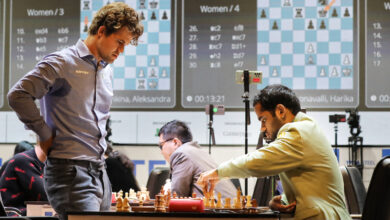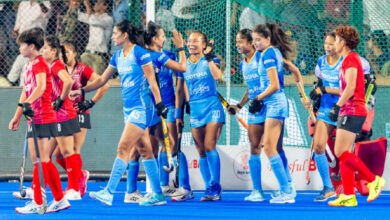Forget ‘next Sindhu or Saina’, focus on a pack of 6-7 players – Pullela Gopichand’s mantra to seize Badminton glory | Badminton News

Pullela Gopichand isn’t burdening himself with the pressure to unearth the ‘next Sindhu or Saina’. He developed two Olympic medalls from scratch, starting 20 years ago. He watched them deliver on most part of their potential, fritter some away, but elevate Indian badminton to another plane nevertheless, and has moved on to the next task at hand. He believes no coach can get stuck in trying to churn out remakes of past greats – Saina’s natural strength, Sindhu’s easy reach and power, can’t be cloned. But not having a rangy or untiring talent rise on the horizon, is no excuse to keep waiting endlessly for a precocious, physically built specimen to show up and play messiah to Indian women’s singles. “It doesn’t work that way,” he realically says.
With one firm eye on global developments, and another warily scanning the Indian scene, Gopichand declares, “Our best chance is not one brilliant player. It is packing the Top 30 with 6-7 good players, and attacking every tournament like a pack, and targeting titles.”
Having minutely observed the development patterns of upcoming WS players in the last decade, Gopichand reckons it’s time to turn real, without drowning in delusions of long-term targets, pinning hopes on prodigies who might or not deliver after 5-10 years.
“Fitness-wise, Indian girls are not as strong currently that same player will go to every tournament and keep winning through the year. But we have numbers to pack the Top 30. When we prepare players, they are good enough to get big wins on the international circuit. Let’s not forget our capabilities,” he says.
Gopichand sensed a barren future in 2017, and has been pushing for changes in camps and levelling up of coaches, but he doesn’t view the present as bleak. In fact, he senses an opportunity, given a churn will be underway internationally.
“Most top names except An Se-young will retire in the next two years, and there’s many spots to fill up. Indonesia, Malaysia, even China are struggling with their second-string. Denmark and Chinese Taipei don’t have a visible next big name, the likes of Michelle Li, Beiwen Zhang and Kirsty Gilmour will be gone from the circuit. We have to back the talent we have now, and set ourselves a challenge to make most of this. This is the time to flood the circuit with more Indians, our biggest opportunity with empty ranking spots in the next two years. We need to back our women,” he says.
Legends like Marin, Sindhu, Yamaguchi, Tai Tzu and Ratchanok on the wane is one part of this equation. The other is the brittle year-round fitness of the Chinese second-string. Even a bronze medall like Gregoria Mariska Tunjung can be felled a Malvika Bansod, like last week at China Open. While capable of winning titles with games to boot, the Chinese like Wang Zhi Yi or Han Yue or Japanese like Aya Ohori and the recent sensation Tomoka Miyazaki or Thais like Supanida and Chochuwong, can be pushed off the perch in a match, as several upstarts have shown in various tournaments.
Temperamentally and physically, this next rung isn’t as sturdy as the previous generations of Chen Yufei & He Bingjiao or Okuhara & Yamaguchi & Ratchanok were once they hit the big circuit, and remain susceptible to a clever game. “Sure, they can be toppled. But is India ready with our arsenal?”
“Our best chance is not one brilliant player. It is packing the Top 30 with 6-7 good players,” Gopichand declares. (FILE/PTI/BAI)
Tasnim Mir took a set off Miyazaki last week. Anmol Kharb is slowly chambering up the rankings. Malvika seems determined and prepared for endurance wringers, and made serious forays at China. Ashmita shows flashes of brilliance, but is wildly inconsent. The tall Devika Sihag is constantly threatening to break through, Unnati Hooda carries an X-factor and Tanvi Sharma is fearless in her strokemaking. Rakshitha Ramraj will be a force to reckon with when she hits the groove.
Average (non-exceptional) fitness however, means they will continue in their stop-start impacts. But it’s far from a lost generation. “You need to attach a committed team to train and travel with them. This is the crucial phase to find their footing on the international circuit,” Gopichand says, adding it will need to be a bunch, not a solitary fighter turning up at every tournament, taking turns to knock off the famed names. A bit like India’s men’s singles circa 2017 of Srikanth, Sai Praneeth, Prannoy and Sameer Verma, who hunted in a pack, and eventually nailed 3 Worlds medals, with Lakshya Sen lurking dangerously with his reflex game.
What perturbs Gopichand is that dreamy expectation of one Sindhu-like player turning up out of nowhere, and taking the world storm, without giving a thought to how that will materialise. The alternate scenarios he gets told of are the dire ones — no one capable of making headway for another five years.
“I’ve heard the same talk before back in 2004-5, where I was told none of our girls are good enough. When I started 20 years ago, we had 10 girls playing at a decent level, and we found 2 (Saina and Sindhu) who went on to be one of the best in the world. Now we have 100s of academies and 100 players at higher levels than back then at drict meets. Are we just disregarding the 17-20 year olds? We just have to look harder and work on all that talent,” he inss of the non-glamorous hard work behind the scenes, that goes into building champions, before marketeers catch a whiff.
If Gopichand says it’s time to move over, to hedging expectations, hoping for forays from a bunch of 6-7 players aiming to park in Top 30 and make blitzing attacks, then the plan probably merits attention. He’s telling you what isn’t working out, and what precisely might.







